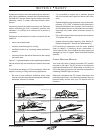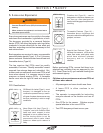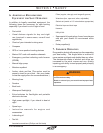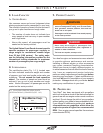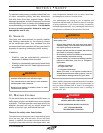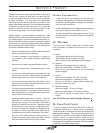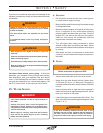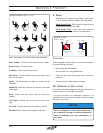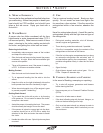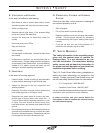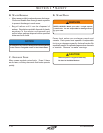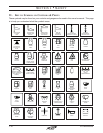
275 Performance
®
1.11
Section 1 • Safety
a. MeDical eMerGencY
You may be far from professional medical help when
you are boating. At least two people on board your
boat should be CPR certied, and should have
taken a rst aid course. Equip your boat with a
rst aid kit.
b. WaTer rescue
A person who has fallen overboard will die from
hypothermia in water temperatures below 70°F if
not rescued quickly. Water rescue consist of three
steps: returning to the victim, making contact with
the victim, and getting the victim back on board.
Returning to the Victim
• Immediately make everyone aware of the incident
and keep the victim in sight.
• Slow the boat and keep pointing toward the person
overboard. At night, direct the best available light
source at the person.
• Throw a life preserver, even if the person is wearing
a PFD. It will serve as another marker.
Making Contact
• Slow the boat and circle toward the victim.
• Try to approach heading into the wind or into the
waves.
• Keep the victim on the right (starboard) side so the
boat operator has the victim constantly in sight.
• When almost alongside, turn off the engine in gear
to prevent propeller "windmilling."
Getting Back Aboard
• Try to reach the victim with a pole, or by throwing
a life preserver. Do not swim to rescue the victim,
except as a last resort.
• Assist the person in boarding the boat. The person
should normally be brought in over the stern.
• If the person is injured or cannot get into the boat,
a rescuer should put on a PFD with a safety line
attached to the boat and enter the water to assist
the victim.
• Handle the victim with care. Spinal injuries may have
occurred.
c. fire
Fire is a serious boating hazard. Boats can burn
quickly. Do not remain on board and ght a re
for more than a few minutes. If the re cannot be
extinguished within a few minutes, abandon the
boat.
Have re extinguishers handy. A small re can be
extinguished quickly with the right size and type of
re extinguisher.
• Extinguish smoking materials, shut off blowers,
stoves, engines and generators.
• Throw burning materials overboard, if possible.
• If the re is accessible, empty the contents of re
extinguishers at the base of the ames.
• If the re is in the engine compartmentand you have
an automatic extinguisher that activates, wait 15
minutes before opening the compartment. Have a
portable extinguisher ready in case the re ares
up.
• Signal for help.
• Grab distress signals and survival gear. Put on
PFDs. Prepare to abandon ship.
D. flooDinG, sWaMpinG anD capsizinG
In the event of ooding, swamping or capsizing:
• Try to shut off engines, generators and blowers
before leaving the boat.
• Have everyone put on Personal Flotation Devices
(PFDs).
• Account for all who were on board.
• If the boat is oating stay with the boat. Hang on, or
climb on the boat and signal for help.
• Only as a last resort should you attempt to swim to
shore - it is further away than it looks and you can
tire and drown.



